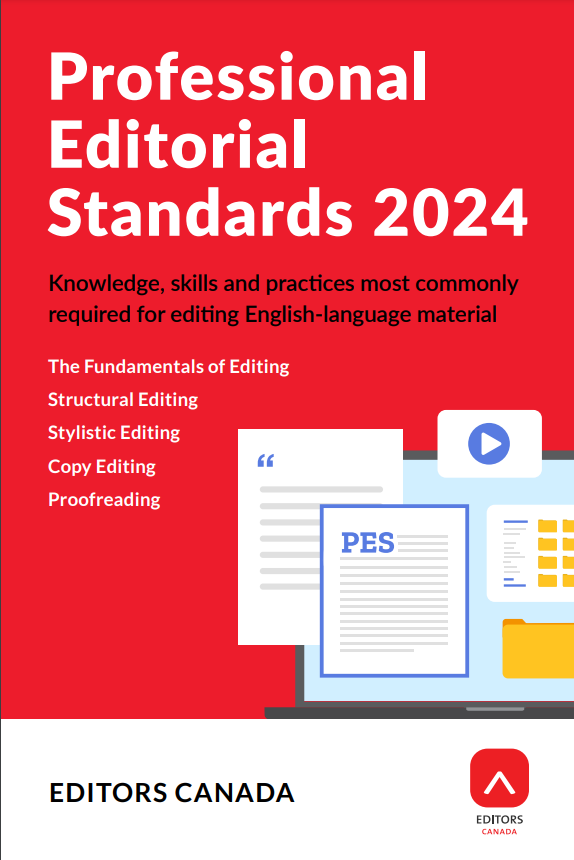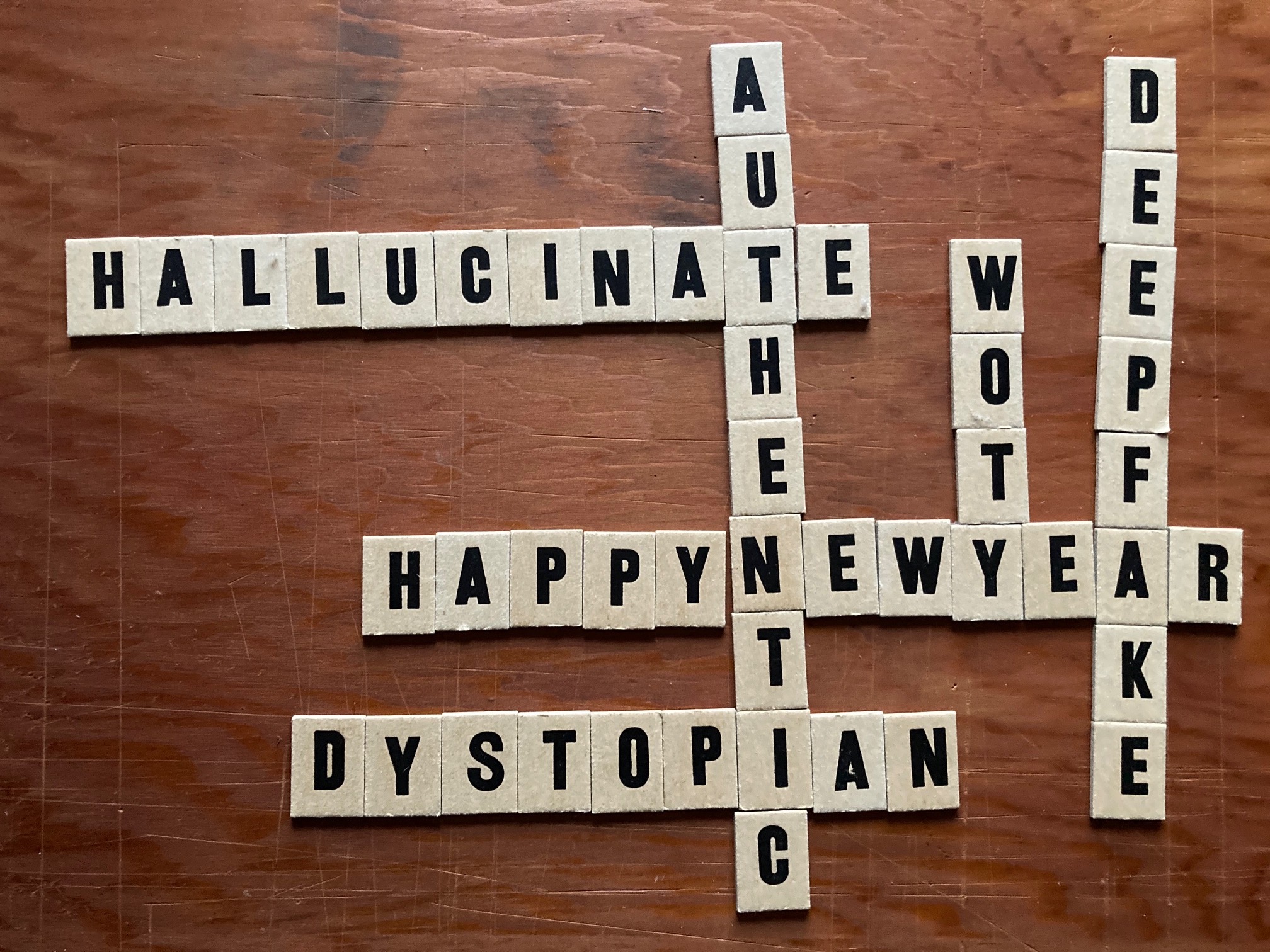Editors Canada's updated Professional Editorial Standards move our profession forward.
The value of style sheets
 Style sheets are a fundamental tool for editors. We learn early in our careers that for every document we work on, we should record our decisions about spelling, punctuation, capitalization, numbers, and other recurring elements. The main goal in creating a style sheet is consistency, but their value goes well beyond that.
Style sheets are a fundamental tool for editors. We learn early in our careers that for every document we work on, we should record our decisions about spelling, punctuation, capitalization, numbers, and other recurring elements. The main goal in creating a style sheet is consistency, but their value goes well beyond that.
A style sheet is, quite simply, a list of every feature in the document that someone looked up in a dictionary, style manual, grammar usage guide, or atlas and made a judgement about. For example, is it judgement or judgment (“e” versus no “e”)? West Coast or west coast (capitals versus lower case)? Is it sous-chef or sous chef (hyphen versus no hyphen)? Montréal or Montreal (accent versus no accent)? Are numbers spelled out under 10? Under 100? Always? Never? Does a list take a comma before “and” or “or,” and does the first word of a bulleted list begin with a capital or lowercase letter? A style sheet records each of these decisions, under appropriate headings, to ensure consistency throughout the document.
Consistency is the backbone of professional documents. It helps readers focus on the message, not the mistakes. It shows attention to detail and builds trust—with readers and with clients. But trust also comes from making the best use of people’s time, advocating for inclusive language, and working as a team.
Saving time
Style sheets save an enormous amount of time. From writers to editors and reviewers, graphic designers, and indexers, many people can be involved in putting together a document. And a style sheet ensures that everyone in the process is clear about what has and has not been decided.
In the proofreading course I teach, students review documents with and without style sheets. All of them comment on how much easier—and faster—it is to proofread documents that have a style sheet. These projects involve less fact-checking, less querying the client about their preferences, and less confusion about what is “correct” and what is not. Using a style sheet eliminates doubt. It means that editors are not rechecking information that the writer has already confirmed, or that the designer is not inadvertently using title case for headings when a preference for sentence case has been declared.
Where I most value a style sheet for saving time is when I’m editing a document that is part of a series, or updating a new edition of a document that has been published before. In both instances, matching the existing text is critical—and not having to deduce the style decisions from previous documents can save hours of time and frustration. The more complete the style sheet, the more useful it is to the next person working with the text—whether that’s in a couple of weeks or a couple of years.
Standing up for inclusion
The goal of any document is to clearly and concisely convey a message for an intended audience. And increasingly, editors are becoming champions not only of plain language but also of inclusive language. The words in a document should be both easy for readers to understand and respectful.
A style sheet is an excellent way to promote terms that respect the preferences of people featured in a document, as well as guidelines about how to use those terms. When thinking about inclusive language, we often consider the language of sexual identity and gender, ethnicity and race, mental and physical health and ability, and socioeconomic status. But language evolves, and what is considered inclusive at one point in time may shift. In science and nature writing, for example, some writers have been moving toward more inclusive language with pets, plants, and even fungi.
A book I edited many years ago about training dogs referred to the people who look after these pets in their home as “dog owners.” In more recent editions, that language has shifted to “dog guardians,” recognizing that dogs are living and feeling animals with agency who need compassion, not control. We’ve updated the style sheet. Similarly, some writers are moving away from the term “invasive species,” which connotes a maliciousness or intent to do bad things. Instead, they are suggesting “displaced species” or discussing how moving a plant or animal to a particular habitat may cause it to become a “potentially problematic species.”
I appreciate style sheets that explain the rationale for newer language preferences and give examples of how, when, and why to use them. In other words, style sheets are often an opportunity for me to both learn and teach.
Supporting teams
Creating a style sheet is an act of sharing knowledge and information with others. Using a style sheet and adding to it means supporting the work of others and building on it. And when a department or organization commits to expanding individual style sheets into a more comprehensive style guide that applies to all its documents, it is encouraging people—often working independently—to communicate and work toward a common goal. That process can create dialogue, build trust, and lead to strong teams that value and empower each other.
Over the years, I have created and worked with hundreds of style sheets—some excellent, some quite good, but remarkably few inaccurate or incomplete. I’m always grateful when I receive a well-organized, comprehensive style sheet for a project—and regardless of whether I know the person who developed it, I consider them an ally. That attention to detail and willingness to work hard for a client and make life easier for others goes a long way.
In recent months, I’ve been working with some colleagues to help build a new client’s style guide. It’s a work in progress, but the process has been extremely rewarding—for getting to chat about language with others who care passionately about words, for drawing on and coming to understand many different points of view, for participating in open and honest discussions that are leading to a strong partnership with the client and clear, compelling text for readers.
Style sheets are so simple. They can be created with a pen and paper or in a word-processing program by anyone at any time. Yet a well-designed style sheet is a powerful communication tool. It builds trust with readers, with colleagues, with clients. So if you’re not using style sheets yet—or not updating them regularly—what are you waiting for?



